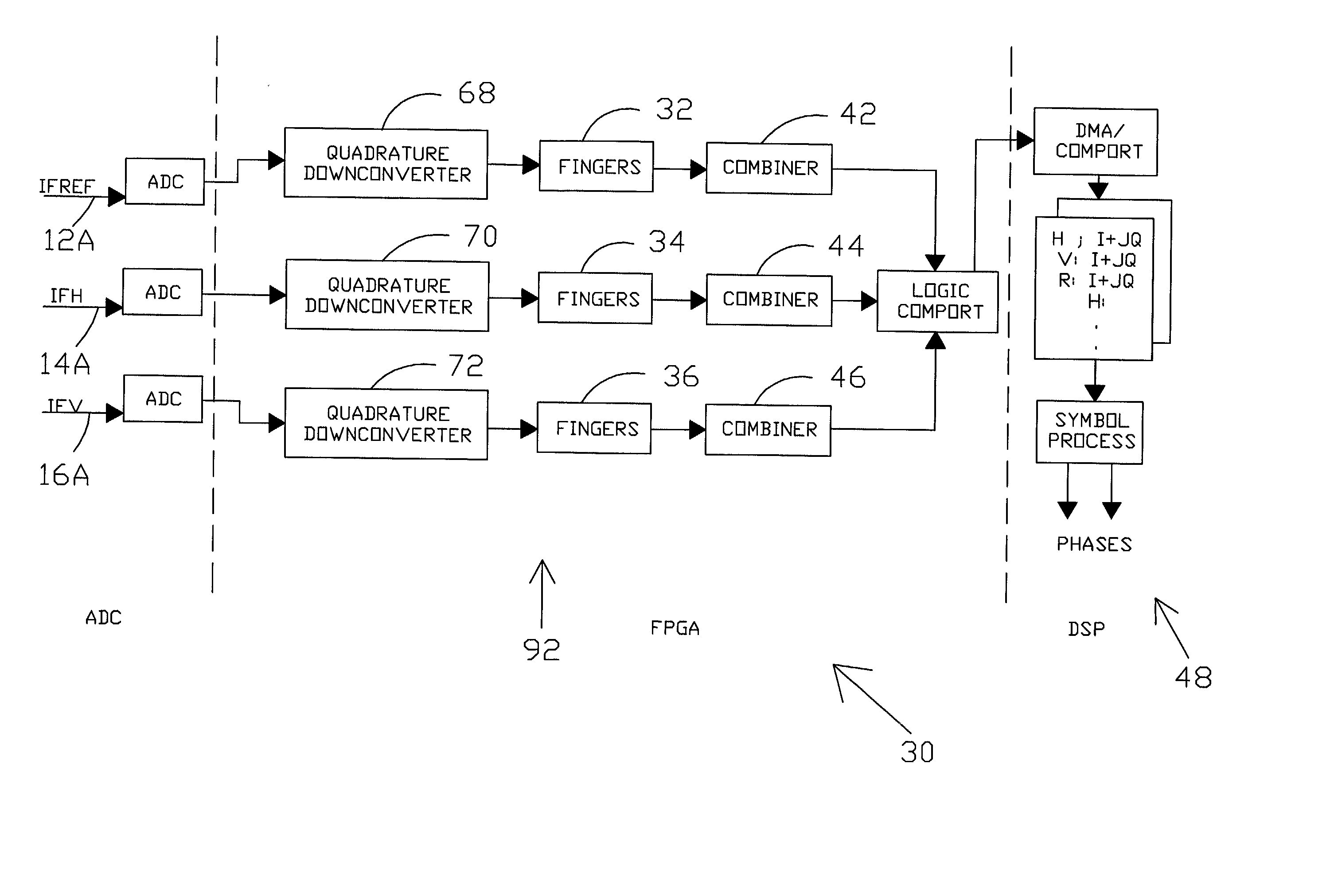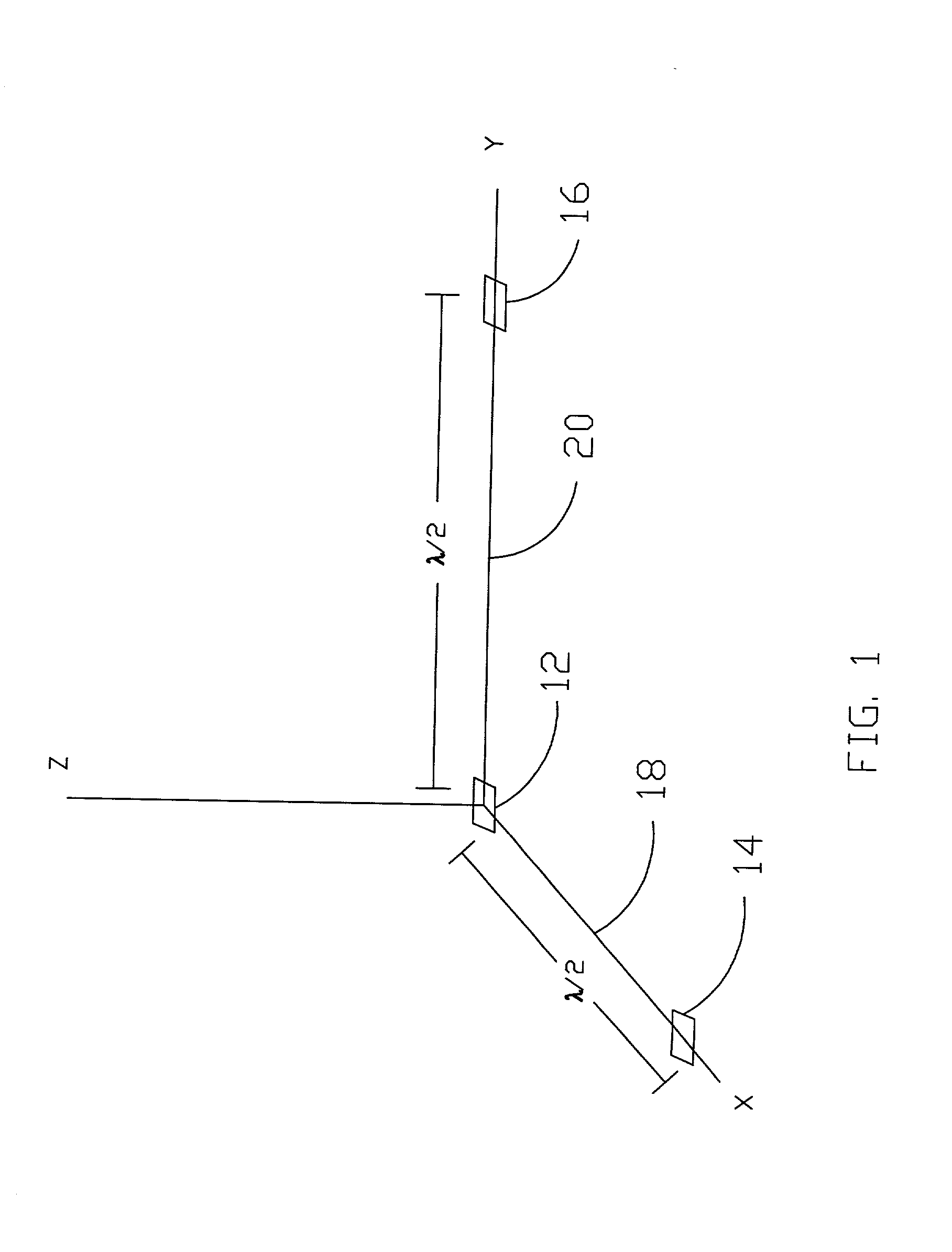Passive tracking system and method
a passive tracking and transmitter technology, applied in direction finders, instruments, measurement devices, etc., can solve the problems of slow location fix, additional antennas, and additional circuitry, and achieve the effect of not necessarily operating indoors, and slowing down the fixation speed
- Summary
- Abstract
- Description
- Claims
- Application Information
AI Technical Summary
Benefits of technology
Problems solved by technology
Method used
Image
Examples
Embodiment Construction
[0061] The present invention provides a quickly operating, inexpensive, system and method for locating a transmitter in 3-D space (in x, y, and z). Location times may typically be determined real time (less than one second). The accuracy of location is comparable to that of GPS location systems and is typically at least within tens of feet but may potentially be considerably more precise depending on the particular mode of operation as discussed hereinafter. In a preferred embodiment, the transmitter may be a standard communications transmitter, such as a cell phone or other communications transmitter, and it is desired to determine the location thereof. Thus, the transmitter sends a standard data-modulated signal, which could be any type of communications signal. An advantage of the present invention is that a special distress signal is not required for operation of the invention so that the present invention can simply be used as an inexpensive, add-on feature to any communication...
PUM
 Login to View More
Login to View More Abstract
Description
Claims
Application Information
 Login to View More
Login to View More - R&D
- Intellectual Property
- Life Sciences
- Materials
- Tech Scout
- Unparalleled Data Quality
- Higher Quality Content
- 60% Fewer Hallucinations
Browse by: Latest US Patents, China's latest patents, Technical Efficacy Thesaurus, Application Domain, Technology Topic, Popular Technical Reports.
© 2025 PatSnap. All rights reserved.Legal|Privacy policy|Modern Slavery Act Transparency Statement|Sitemap|About US| Contact US: help@patsnap.com



